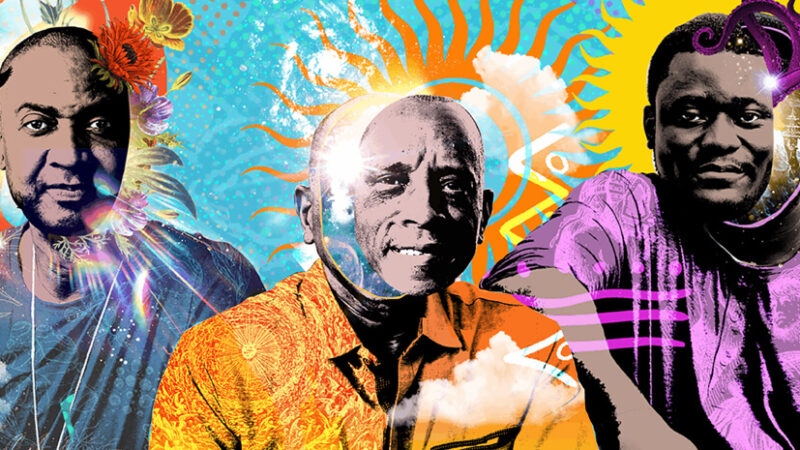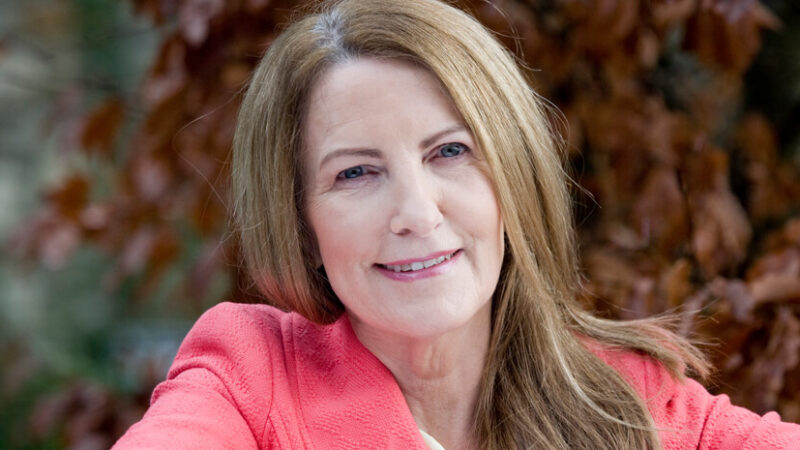-
E117: The Real Work: Letting Go from Within
Michael Singer — October 2, 2025
True spirituality isn’t about mystical experiences or lofty ideals—it’s about honestly facing...
-
Once More: Reflections on Reincarnation and the Gap Between Lives
Tami Simon — September 26, 2025
In this special reflection episode of Insights at the Edge host Tami Simon looks back on her...
-
Honey Tasting Meditation: Build Your Relationship with Sweetness
There is a saying that goes “hurt people hurt people.” I believe this to be true. We have been...
Written by:
Amy Burtaine, Michelle Cassandra Johnson
-
Many Voices, One Journey
The Sounds True Blog
Insights, reflections, and practices from Sounds True teachers, authors, staff, and more. Have a look—to find some inspiration and wisdom for uplifting your day.
Standing Together, and Stepping Up
Written By:
Tami Simon -
The Michael Singer Podcast
Your Highest Intention: Self-Realization
Michael Singer discusses intention—"perhaps the deepest thing we can talk about"—and the path to self-realization.
This Week:
E116: Doing the Best You Can: The Path to Liberation -
Many Voices, One Journey
The Sounds True Blog
Insights, reflections, and practices from Sounds True teachers, authors, staff, and more. Have a look—to find some inspiration and wisdom for uplifting your day.
Take Your Inner Child on Playdates
Written By:
Megan Sherer
600 Podcasts and Counting...
Subscribe to Insights at the Edge to hear all of Tami's interviews (transcripts available, too!), featuring Eckhart Tolle, Caroline Myss, Tara Brach, Jack Kornfield, Adyashanti, and many more.
Most Recent
Friedemann Schaub: Becoming the Empowered Leader of Yo...
The subconscious mind has a critical role in our lives—a role that it’s always busy fulfilling. But it also has a problem, explains Dr. Friedemann Schaub: “It pretty much does whatever it started to do early in our lives.” In this podcast, the visionary physician and researcher speaks with Tami Simon about how we can begin to teach our subconscious “not just to go for safety, but to go for fulfillment, purpose, and passion.”
Listen in for insights from his Sounds True publication, The Fear and Anxiety Solution, and his new book, The Empowerment Solution, as Tami and Dr. Schaub explore consciously collaborating with your subconscious; positive and negative emotions; how the subconscious deals with a sense of conditional acceptance and love; changing the filter of not being good enough; discovering the essence of being and the peace that comes with it; the power of yoga, meditation, and other spiritual practices; a guided journey to your core self; escaping oneself versus propelling oneself forward; beliefs, the laws of our life; breaking the habit of people-pleasing; the difference between empathy and compassion; growing through our pain; setting relationship boundaries; finding the marriage between head and heart; trauma healing; learning to treat ourselves like we treat those we love; helping your subconscious trust your conscious mind; self-appreciation; stopping the pattern of defining yourself by your achievements; and more.
Note: This episode originally aired on Sounds True One, where these special episodes of Insights at the Edge are available to watch live on video and with exclusive access to Q&As with our guests. Learn more at join.soundstrue.com.
Turn your understanding of meditation inside out and u...
Meditation has found a home in the West. Countless scientific studies tout its benefits, and a multitude of students proclaim its life-changing value. I am one of those students. For over forty-five years I have practiced this ancient art, and I continue to reap its remarkable rewards. While I remain a follower of many wisdom traditions, and believe that no one has a patent on truth, thirty years ago I took refuge in Buddhism. The adage “Chase two rabbits; catch none” points out the necessity of commitment, and the dangers of spreading yourself too thin.
My passion for meditation led me into the traditional Tibetan three-year retreat, where I became a monk with robes and a shaved head, meditating fourteen hours a day in a remote monastery. I even slept sitting up in meditation posture, practicing the nocturnal meditations of dream and sleep yoga. Three-year retreat is like a meditation university, providing the opportunity to practice dozens of meditations in the most nurturing environment. It remains the most transformative experience of my life.
Of the many practices I was introduced to in retreat, one meditation stands out: the quirky, intense, multifaceted, and revolutionary practice of reverse meditation. I learned these practices within the context of Mahāmudrā (Sanskrit for “great seal”), a lofty tradition in Tibetan Buddhism that explores the nature of the mind. This was over twenty years ago, and since then these radical meditations have become a cornerstone of my spiritual path.
They’re called “reverse” meditation for a number of reasons. First, these practices are the opposite, or reverse, of what many of us associate with meditation. Most people think that meditation is about feeling good, getting “Zen,” or otherwise chilling out. But this is just one small aspect of meditation. Complete meditation is not about feeling good—it’s about getting real. And getting real requires dealing with the reality of difficult situations.
Second, these unique meditations are designed to reverse our relationship to unwanted experiences, which means going directly into them instead of avoiding them. In so doing we can discover the basic goodness of whatever arises, which is deeper than interpretative goodness. Basic goodness refers to the ineffable “suchness, isness, thatness” of whatever occurs—good or bad.
If we capitulate to our usual avoidance strategies, we push the acute, conscious psychological discomfort of avoidance into becoming a chronic, unconscious mental cramp. The discomfort is still there, but now it’s buried deep in our body-mind matrix, where it works backstage to dictate much of our onstage life. The rejected experience then manifests symptomatically—it becomes an undiagnosed reflection of an underlying discord that expresses itself in virtually everything we do. Our actions then become evasion tactics—reactivity, psychological duress, physical illness, and all manner of unskillful responses to the challenges of life—as we try to skirt these buried, uncomfortable feelings.
The reverse meditations give us the opportunity to relate to our mind instead of from it—and also to establish a relationship to our evasion tactics, which otherwise become obstacles that act like scar tissue to sequester the unwanted experience from consciousness. Relating from our mind, from our reactivity, is no relationship at all. In place of conscious relationship, we respond with knee-jerk reflexes to difficult experience, a reactivity that kicks us out of our feeling body and into our thinking head, and into unnecessary suffering. Instead of dealing authentically with the challenging somatic sensation, we leap into inauthentic conceptual proliferation (confabulating and catastrophizing) to buffer ourselves from the discomfort of our feelings. We run from the honest pain and real news that come with being human, and into dishonest commentary and fake news. The truth is that many of the worst things in our life are things that never really “happened”!
Third, the reverse meditations upend our sense of meditation altogether. They represent a revolution in spiritual practice that turns our understanding of meditation inside out and upside down, and therefore radically expand our practice. Situations that were once antithetical to meditation now become our meditation. Obstacles that previously obstructed our spiritual path now become our path. This means that everything becomes our meditation. Nothing is forbidden. We can enter lifetime retreat in the midst of ordinary life.
Excerpted from Reverse Meditation: How to Use Your Pain and Most Difficult Emotions as the Doorway to Inner Freedom by Andrew Holecek.

Andrew Holecek is an author, speaker, and humanitarian who offers seminars internationally on meditation, lucid dreaming, and the art of dying. His work has appeared in Psychology Today, Parabola, Lion’s Roar, Tricycle, Utne Reader, Buddhadharma, Light of Consciousness, and many other periodicals. Learn more at andrewholecek.com.
Three Black Men
We know that we’re living in a critical time in human history. We know that we can no longer say, “It’s not my responsibility.” What is it that this time begs us to see? In this podcast, Tami Simon joins visionary leaders Bayo Akomolafe, Orland Bishop, and Resmaa Menakem for a compelling conversation about the intersection of past, present, and future and the creation of new rituals and pathways for healing, equity, and belonging for all people.
Tune in as Bayo, Orland, and Resmaa discuss with Tami: “facing the monstrous” and reconciling that which we’ve chosen to avoid; how transformation is inevitably disabling; stopping the propagation of violence and fear in the human psyche; the metaphor of the fissure in the road; the power of ritual to foster inclusion and “metabolize” trauma; initiating the shift from the profane to the sacred; tapping the generative energies awaiting expression; imaginal cells and the analogy of the caterpillar and the butterfly; the evolution of music and trusting the maturation of creative acts; the Trickster archetype, and how oppression is never complete; getting out of the habit of predicting what comes next; and more.
Note: This episode originally aired on Sounds True One, where these special episodes of Insights at the Edge are available to watch live on video and with exclusive access to Q&As with our guests. Learn more at join.soundstrue.com.
Customer Favorites
Emotional Commitment and Great Sex?
Tami Simon speaks with Dr. David Schnarch, a licensed clinical psychologist, certified sex therapist, and clinical member of the American Association for Marriage and Family Therapy. David is the author of the books Intimacy and Desire, Passionate Marriage, and Resurrecting Sex, and with Sounds True he has published a two-session audio program called Secrets of a Passionate Marriage: How to Increase Sexual Pleasure and Emotional Fulfillment in Committed Relationships. In this episode, Tami speaks with David about the four drives of sexual desires, his understanding of integrity and its importance in a healthy partnership, and what it might mean to “hold onto yourself” in relationship. (67 minutes)
Ruth King: Race, Rage, and the Healing Power of Mindfu...
Ruth King is a life coach and insight meditation teacher of the dedicated practitioner program at Spirit Rock Meditation Center. She’s the author of the book Healing Rage: Women Making Inner Peace Possible. In this special edition of Insights at the Edge hosted by Sounds True producer Kriste Peoples, Ruth explains the difference between anger and rage, as well as how examining the patterns of our rage can help us both understand its source and channel its animating energy. They talk about how rage covers over our soft spots and how the experience of it can lead into fruitful lovingkindness practice. Finally, Kriste and Ruth speak on how a deep understanding of these concepts can help craft healing conversations around racial difference and injustice. (69 minutes)
Lorna Byrne: Knowing Yourself as a Spiritual Being
There is a material world we can touch with our hands and see with our eyes. And as Lorna Byrne assures us, there is also a spiritual world that is just as real—one that most of us have forgotten how to see. How might your life change if you were to reclaim your own “spiritual sight”? What would happen if you lived with a direct knowing of yourself as both a physical and a spiritual being?
In this podcast, join Tami Simon for a fascinating conversation with the bestselling author of Angels in My Hair: The True Story of a Modern-Day Irish Mystic, as Tami and Lorna talk about realizing your connection to your own soul—and embracing the “intertwining” of your human and divine aspects; the universal question, What happens when we die?; guardian angels; self-love and accepting yourself as you are; working with fear and doubt; learning not just to look but to see; the cost of denying the existence of the spiritual realm; the gift of life; ceasing judgment and freeing the love within us; prayer, asking for help, and taking action; our childlike, innocent nature; seeing through the eyes of your soul; questions, answers, and all that is beyond comprehension; envisioning a positive future; and more.
Note: This episode originally aired on Sounds True One, where these special episodes of Insights at the Edge are available to watch live on video and with exclusive access to Q&As with our guests. Learn more at join.soundstrue.com.





